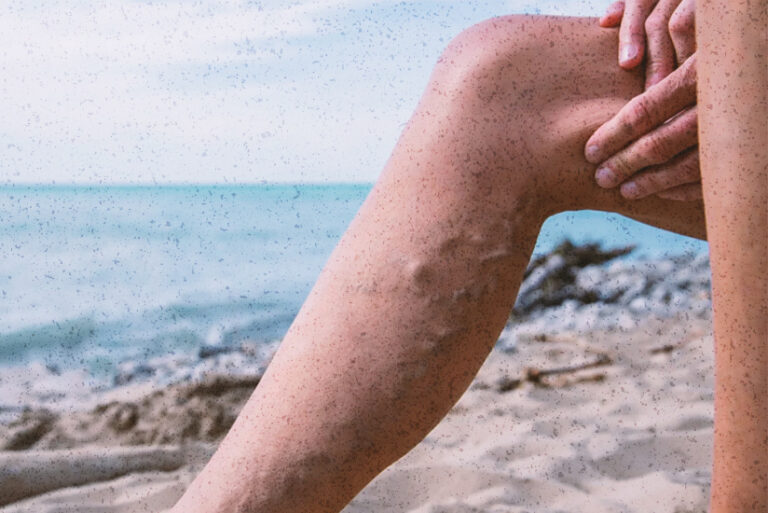By Evangeline T. Capuno
Usually, blood flows from the legs to the heart against gravity. This is helped by the muscle pump and by valves found along the length of the veins. These valves allow blood to move in one direction – that is, upwards towards the heart.
“When the valves are incompetent, then blood will flow backwards or into the skin,” explains Dr. Joyce Lim, a dermatologist at the Paragon Medical Suites in Singapore. “This creates new channels called varicose veins.”
Most people don’t see varicose veins as a disease; they think of them only as something cosmetic. But this is far from the case. “People with varicose veins have a disease, a disease with a cosmetic aspect,” says Dr. Brian McDonagh, a phlebologist (vein specialist) and founder of Vein Clinics of America.
Varicose veins are most common in the superficial veins of the legs, which are subject to high pressure when standing. Besides cosmetic problems, varicose veins are often painful, especially when standing or walking. They often itch, and scratching them can cause ulcers,
Serious complications are rare. However, acute fat necrosis can occur, especially at the ankle of overweight patients with varicose veins. There are also reported cases of blood clotting within affected veins. Varicose veins may also signal a higher risk of other circulatory problems.
Varicose veins usually don’t cause any pain. Signs you may have varicose veins include veins that are dark purple or blue in color and veins that appear twisted and bulging; often like cords on your legs.
When painful signs and symptoms occur, they may include: an achy or heavy feeling in your legs; burning, throbbing, muscle cramping and swelling in your lower legs; worsened pain after sitting or standing for a long time; itching around one or more of your veins; and skin ulcers near your ankle, which can mean you have a severe form of vascular disease that requires medical attention.
Varicose veins are more common among women than in men. Age and pregnancy are the two most common causes.
“As you get older, your veins can lose elasticity causing them to stretch,” says the Mayo Clinic based in Minnesota. “The valves in your veins may become weak, allowing blood that should be moving toward your heart to flow backward. Blood pools in your veins and your veins enlarge and become varicose.”
Some pregnant women develop varicose veins. “Pregnancy increases the volume of blood in your body but decreases the flow of blood from your legs to your pelvis,” the Mayo Clinic explains. “This circulatory change is designed to support the growing fetus, but it can produce an unfortunate side effect — enlarged veins in your legs.”
Varicose veins may surface for the first time or may worsen during late pregnancy, when the woman’s uterus exerts greater pressure on the veins in her legs. Changes in hormones during pregnancy also may play a role. Varicose veins that develop during pregnancy generally improve without medical treatment within three months after delivery.
Varicose veins are not life-threatening. So, there’s no reason to panic or rush to a doctor. But if you are afflicted with varicose veins, you – and your poor legs – will be infinitely better off knowing how to manage them. Here are some suggestions from the experts:
- Take a rest. “Bed rest usually helps the swelling to disappear,” says Dr. Mia Verzosa, a consultant dermatologist at St. Luke’s Medical Center. “Usually, I advise my patients to rest with their legs raised up.”
- Buy a pair of elastic stockings. “These days, support stockings come in various shades and this will help to camouflage the veins,” says Dr. Lim. “In addition, they provide support, meaning they help keep the blood flowing upwards in the direction toward the heart.”
- Kick off the high heels. Varicose veins are discomforting enough to the legs. So, you should wear sensible shoes. “Shoes that allow you to move effectively and efficiently without holding you in a single static position are sensible,” says Dr. Chua Jun Jin, a plastic and aesthetic surgeon at the Mount Elizabeth Medical Center in Singapore.
- Control your weight. Shedding excess pounds takes unnecessary pressure off your veins. “People who are fat tend not to move too much and the less they use their muscle pump, the more the blood will collect in the leg veins,” says Dr. Lim.
- Stay away from tight-fitting clothes. “Tight clothes restrict blood flow at the waist, groin, and legs,” says Dr. Chua.
If you have varicose veins, it’s advisable to wear loose-fitting clothing.
- Shake off the salt habit. “Taking too much salt leads to accumulation of fluid in your body causing high blood pressure and swelling of veins,” says Dr. Chua.
Avoid salting your meals and look for low-salt or sodium-free packaged products. And watch out for fast food that’s usually high in salt.
- Join the non-smokers. Smoking causes skin cells to break down and weaken the walls of veins. “This causes the veins to swell easily which makes the valve incompetent,” says Dr. Lim.
An American study also noted a correlation between smoking and the incidence of varicose veins. The researchers conclude that smoking may be a risk factor for those with varicose veins.
- Go for a walk. “Get your legs moving,” says Dr. Loverne Suratos, section chief of the Dermatology Laser and Light Center at the Asian Hospital and Medical Center. “Walking is a great way to encourage blood circulation in your legs.”
Studies have shown that sedentary adults are more likely to have varicose veins than those who are active.
- Avoid long periods of sitting or standing. Dr. Verzosa advises those who sit or stand long enough to shake their legs every now and then “to have better blood circulation.”
Now, there’s no reason why you should hide those pain away. – ###








